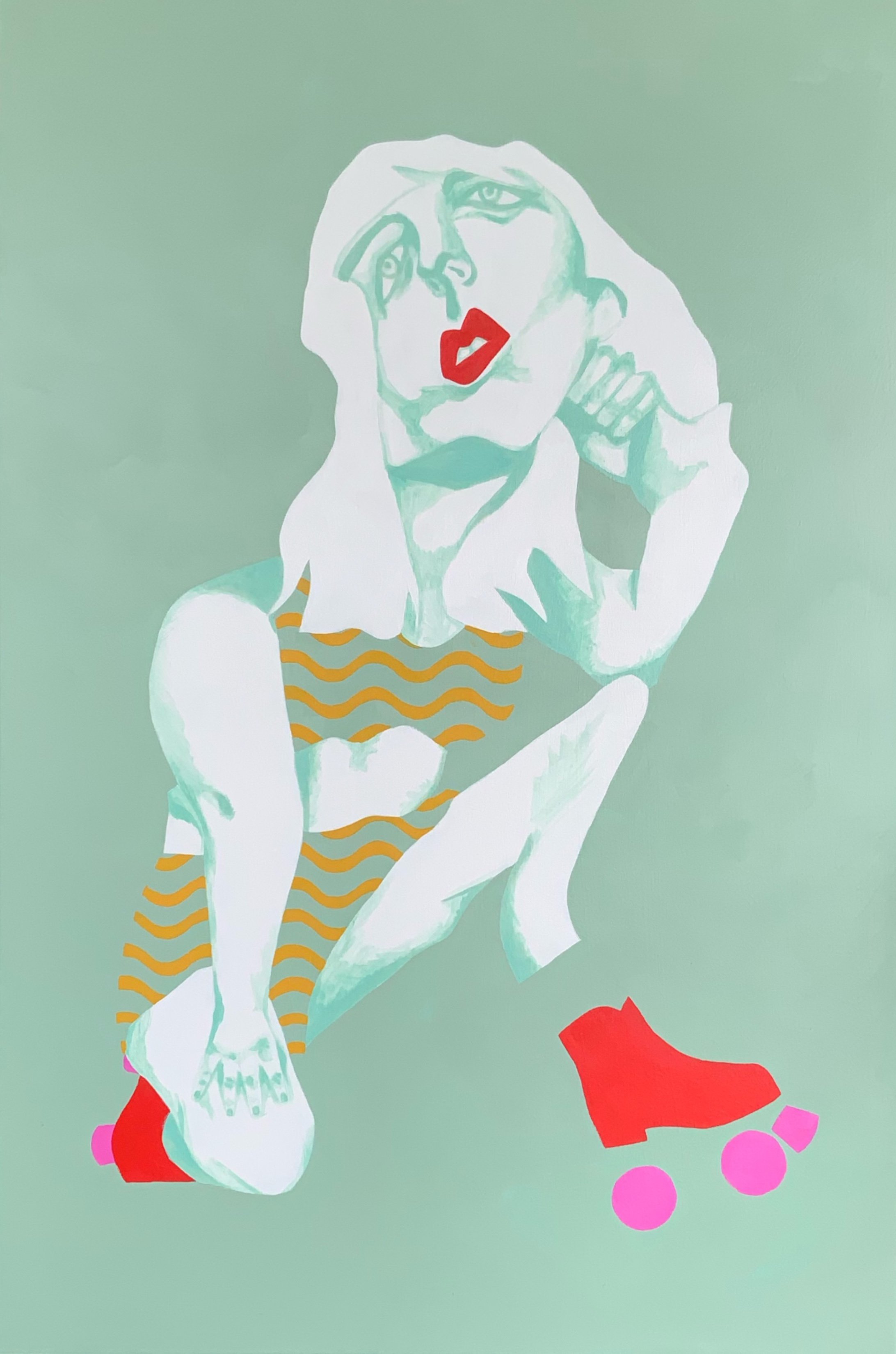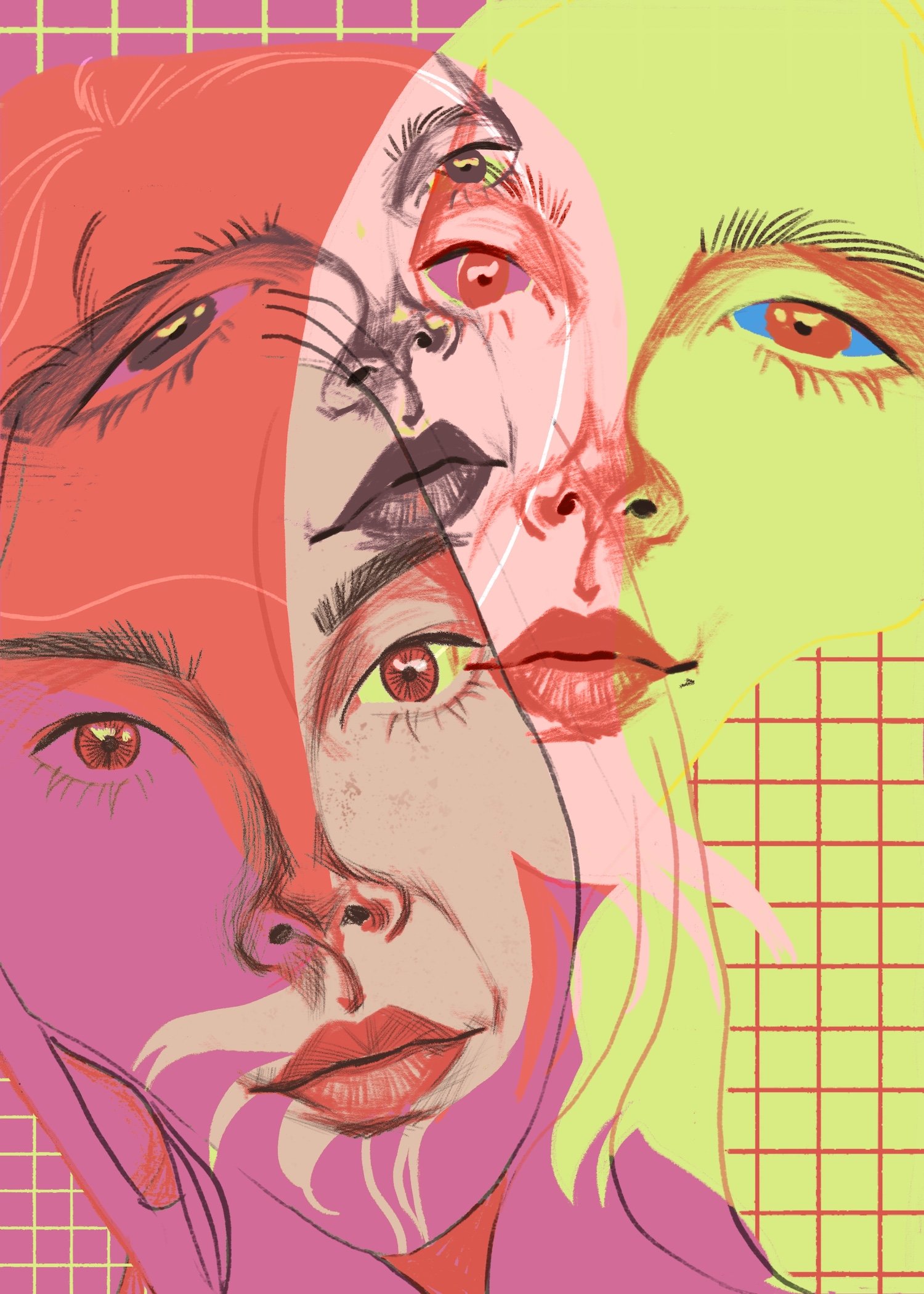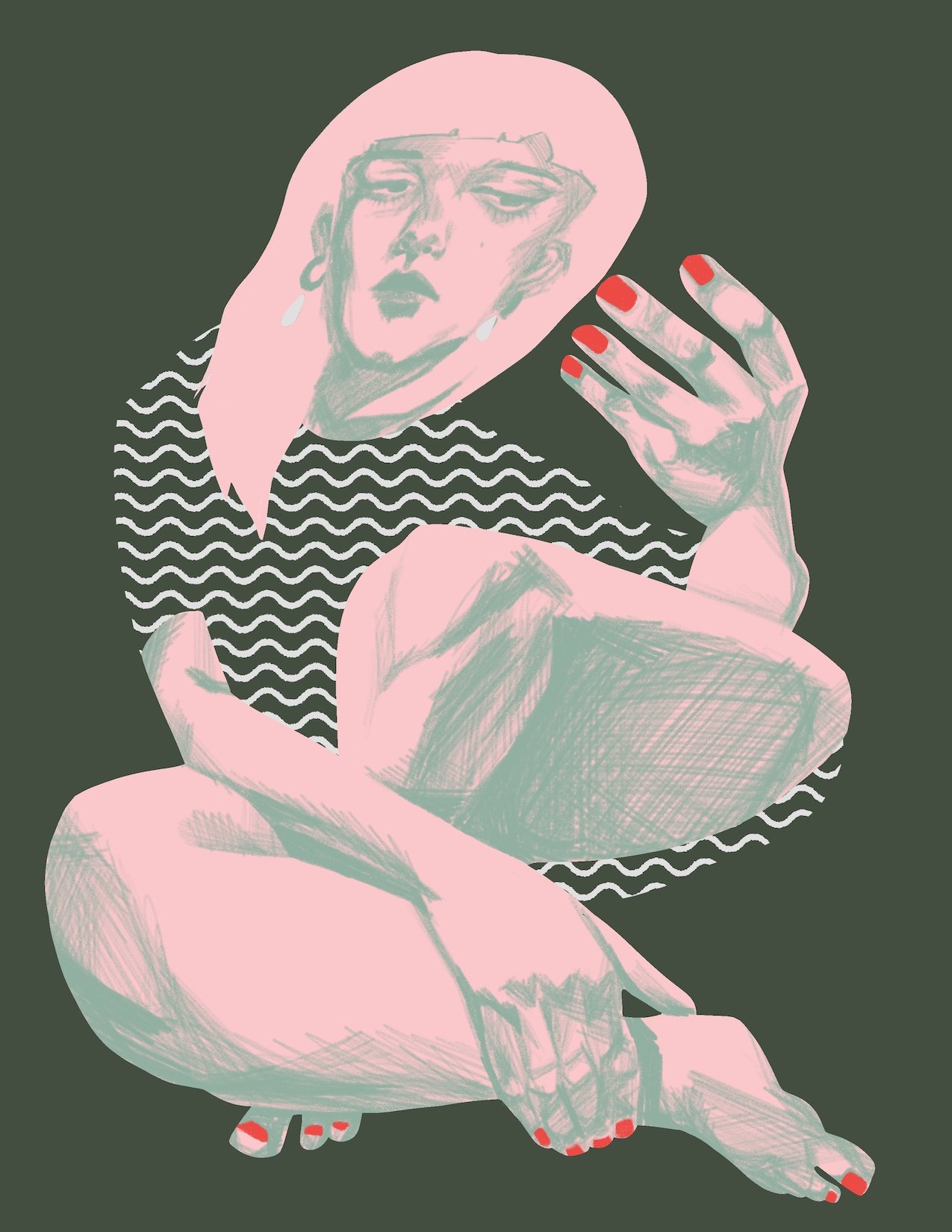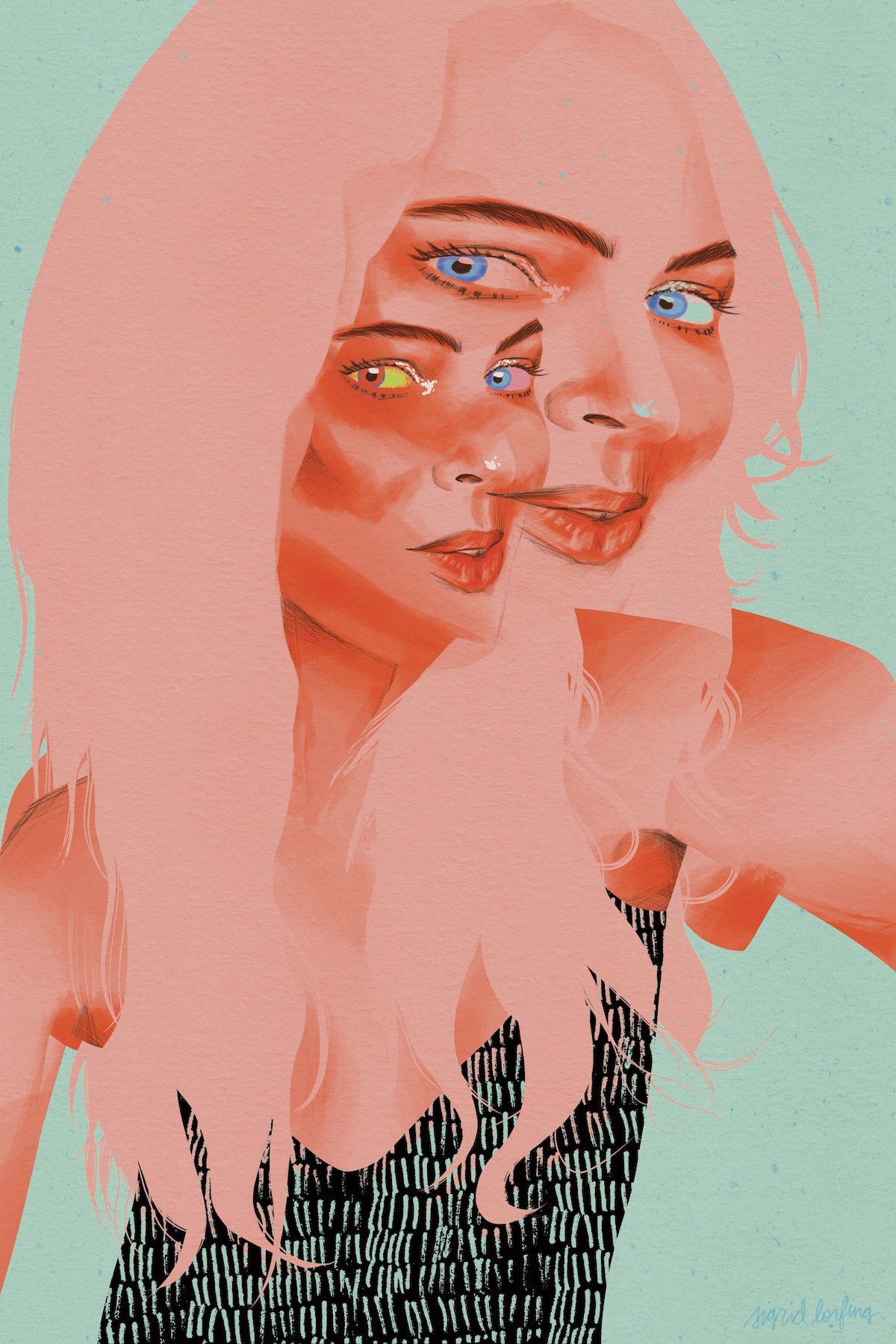Interview with artist Sigrid Lorfing
Sigrid Lorfing graduated from Arkansas Tech University in 2015 with a degree in Art Education and taught middle school until 2020. She now lives in Springdale, and paints in her home studio when not working at Crystal Bridges Museum of American Art. Her figurative work, in paint or pixels, is vibrant, imaginative and a little warped, which adds to its allure. Sigrid has exhibited across Arkansas and her work is currently touring with the Arkansas Arts Council’s 2022 Small Works on Paper exhibition. More of her work can be found at her Instagram and website. (profile photo by Liz Chrisman)
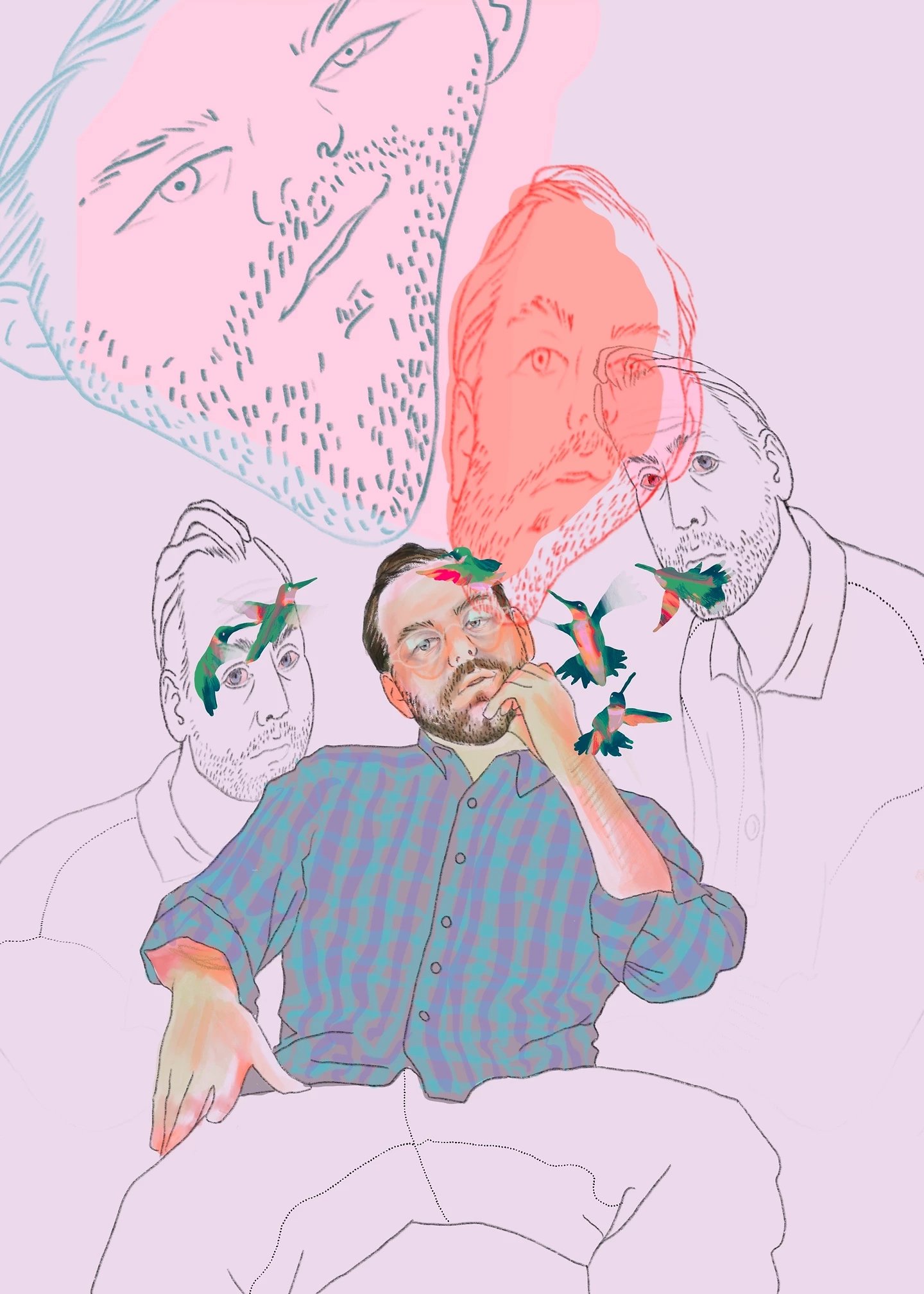
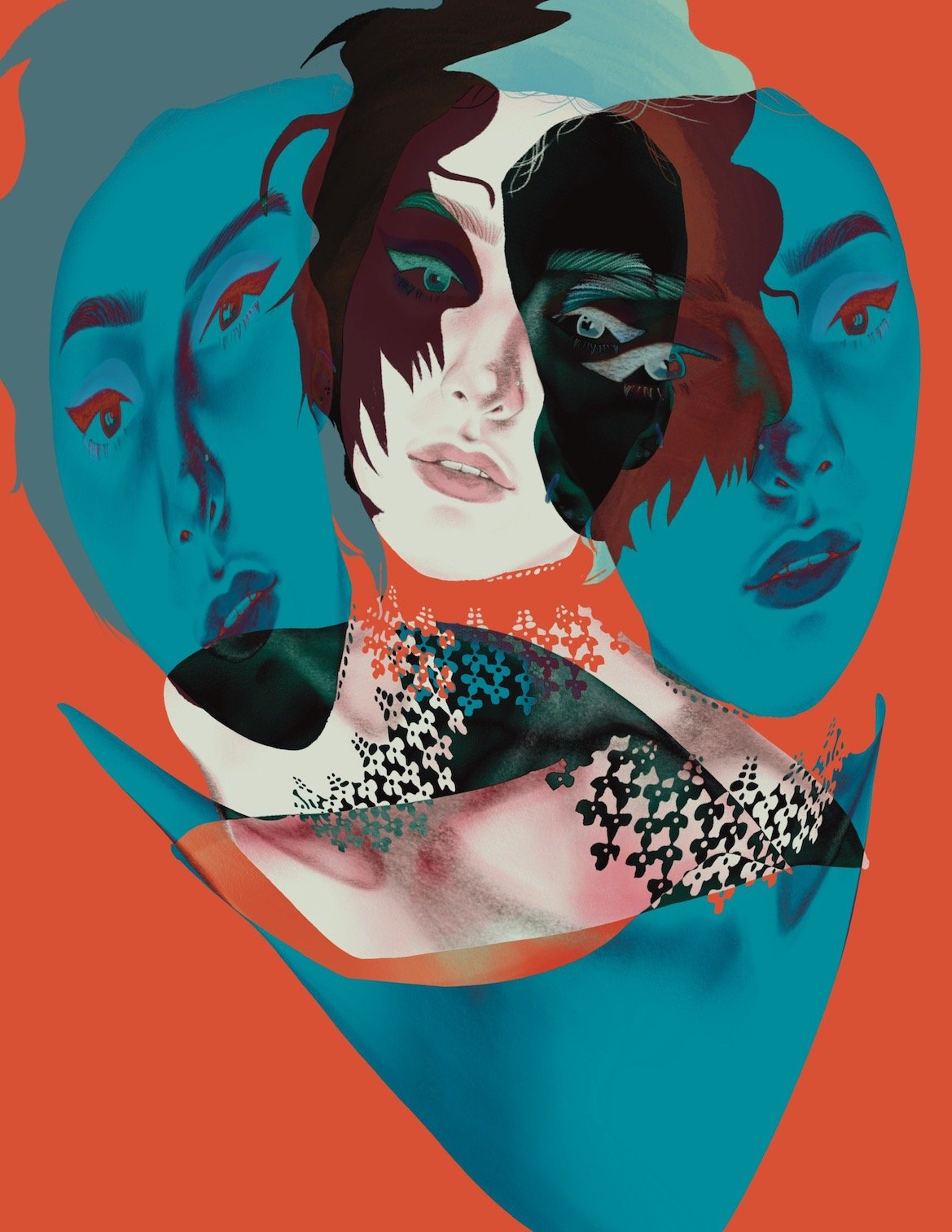
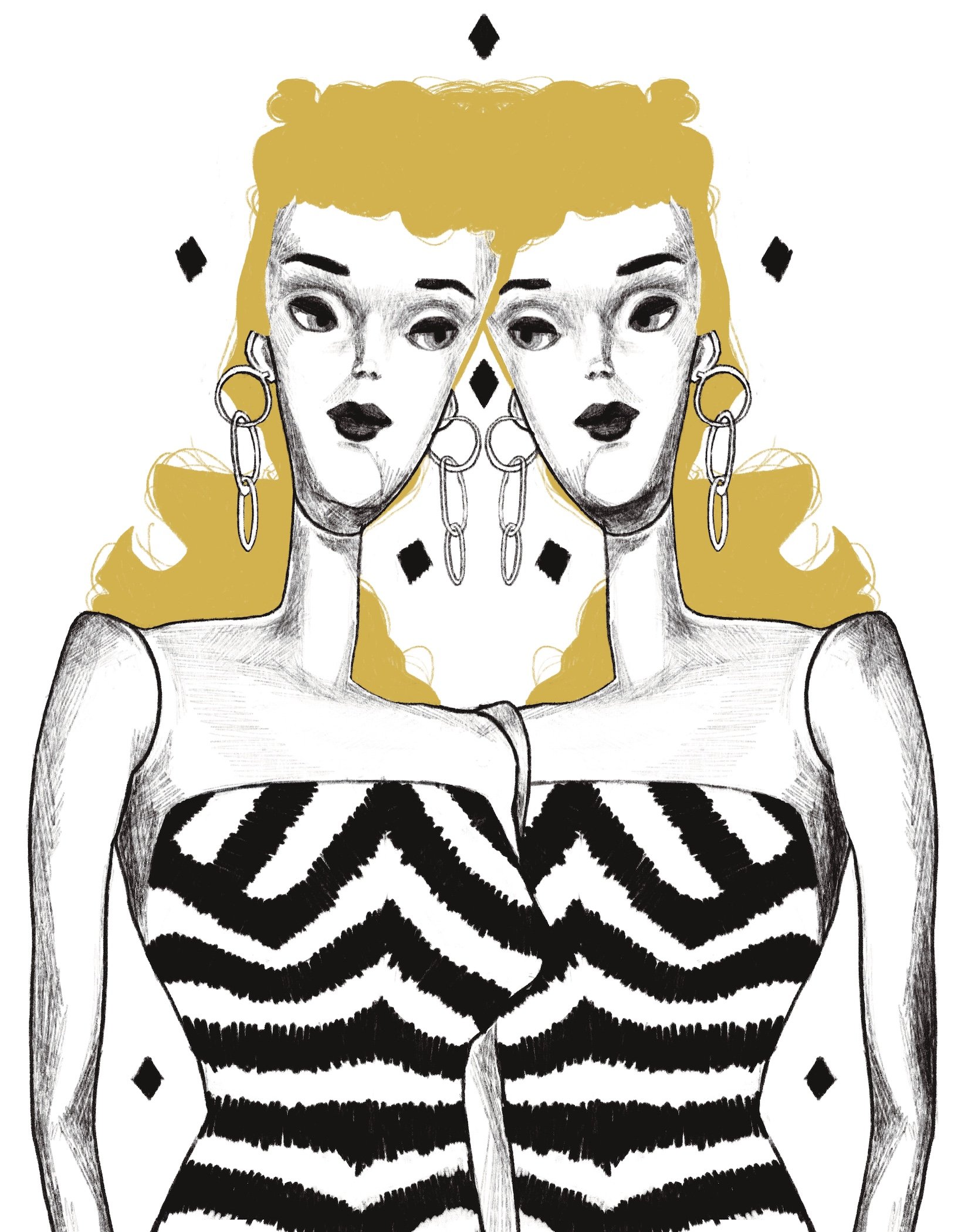
AAS: Sigrid, tell me about yourself. Where are you from originally?
SL: I grew up in Clarksville, AR before moving to Russellville to attend Arkansas Tech in 2011. I majored in Art Education and graduated in 2015. I taught middle school art for five years. Currently, I live in Springdale with my husband Jordan and our two cats Marzipan and Opie Squash. I make art in my home studio when I am not helping guests find their way around Crystal Bridges Museum of American Art. The museum is an inspiring place to work, both because of the beautiful architecture and views of nature as well as being surrounded by other people who love and appreciate art.
AAS: Was art always a part of your life growing up?
SL: Art has been a part of my life in so many ways — visual art, theater, music. I have musicians in my family and so there is a lot of admiration for storytellers and poetry. I think visual art is not too far off from that. My parents enrolled me in art lessons outside of school when I was in fourth grade. The lessons were actually intended for older students, so I really looked up to the other kids in the class for inspiration. I had great connections with my art teachers inside and out of school. My high school art teacher Mrs. Mori was one of the reasons I pursued art education.
AAS: You work in both digital and paint. When did you start experimenting with digital? Was that at Arkansas Tech?
SL: No, I did not do much if any digital artwork while in school. Towards the end of my time studying at Arkansas Tech, I started creating paintings on wood panel. Many were self-portraits that were more autobiographical and symbolic which started to become emotionally difficult to create. I began experimenting with digital artwork in March of 2020. I was an art teacher at Pottsville Middle Grades at the time, and when schools shut down, I began working from home. I was becoming uninspired with the way I had been creating my art up to that point. I had just been gifted an iPad for Christmas, so it seemed like the perfect skill to develop with the extra time.
AAS: Let’s talk about some of your work. Thirteen Swans was in the 2021 Batesville Area Arts Council Exhibition. It is a very mysterious image – floating hands, floating heads, and the title. Tell me about that painting.
Thirteen Swans, 36” x 36”, acrylic and colored pencil on canvas
SL: I love that you describe it as mysterious. A lot of my pieces from around the same time feature those floating body parts, typically in sets of three. I was reading a lot of Philip K. Dick at the time, I still am. His stories always end with the main character losing their grip on reality, which is sort of what I was trying to emulate with the warped reiterations. The image my painting was based on was of a girl, her name is Emma, laying on a blanket in the sunlight. I wanted to focus on the feeling of sunlight on skin and being transported by that warmth. I am very happy with how the painting turned out. While the title sounds a little esoteric, I actually just took it from the subject’s Instagram handle. I do remember enjoying that it sounds hallucinatory, though. Sometimes when I can’t use my own words for a meaningful title, I search for a word or phrase that adds a dimension to the piece, even if it’s just to cause the viewer to question how the two could be related. Sometimes this process even leads me to reinterpret a piece’s meaning in the last act. I should mention that Thirteen Swans was awarded 3rd place the Batesville Area Arts Council National Juried Exhibition in 2021 and was also featured in the group exhibition Figure + Form earlier this year.
AAS: Your painting Sunburn is in the Arkansas Arts Council’s Small Works on Paper 2022 traveling exhibition. The color is bold, like in most of your work. Talk about that piece and your use of color.
Sunburn, 11” x 8.5”, acrylic on paper
SL: I love color but it’s usually those decisions that I struggle with when I am making a piece. A lot of my work is currently very bold in an effort to combat that. Andy Warhol was one of my favorite artists growing up, so I have no doubt that has had some influence. In Sunburn, I wanted to approach the figure like a landscape. After laying down a base of red, there were a few elements I discarded (clouds, patterns, etc.) because I really loved how oppressive the sky became. I decided to keep green as the only other color so that the red could sort of vibrate against it even more. It found a good spot between being a sort of idyllic beach portrait and something a little scary and foreboding. This is my second time being in SWOP, and it means a lot to me. Before being in the exhibition myself, I would look to see which artists were accepted and discovered many of my favorite local artists that way.
AAS: One of your digital works, Beatrice, was featured on the cover of The Idle Class Winter 2020 Makers issue. It is a striking piece.
Beatrice, 14” x 11”, digital drawing
SL: I have been making art for a long time but when I started experimenting with digital art I also started posting my creations on Instagram. Julia, the editor at the time, found my work, and reached out to ask if I was interested in being featured potentially on the cover. Of course! I was very excited. This might be embarrassing, but I ran around my house four times that night. The issue highlighted maker’s around the state of Arkansas and I was incredibly thrilled to be one of them. Julia wrote an article about me and my artwork, which was very lovely. Beatrice was named after "Rappaccini’s Daughter" by Nathaniel Hawthorne. I thought that it suited her. That piece has a very special place in my heart because of that cover feature.
AAS: Talk about your process for creating digital art.
SL: My iPad is my sketchbook. Many of the references for the pieces featured here were found on r/redditgetsdrawn, a forum where people post pictures (usually of themselves) that they would like artists to draw. I started frequenting it during the early stages of the pandemic and I really loved the social aspect of drawing a stranger. If a particular image really inspired me, I would create whatever I felt made it sing. I generally begin by drawing a contour line drawing of the person. From there I may make multiples of it or warp it. I think about what pieces I’d like to keep or turn into a field of pattern. I probably should, but I don’t work from thumbnails. I rely on a lot of trial and error and eventually it all unfolds. I would sometimes get decision paralysis with a traditional sketchbook and creating digitally has allowed me to eliminate excess waste and work more quickly so that I can try new things.
I sell prints of my work on Etsy. There are some pieces that are open editions that I will have printed multiple times over, but there are others that I have done in a smaller run of four, or that will receive hand embellishment. I’ve been learning what works and what doesn’t as I go.
AAS: When you have idea for a piece, it is always predetermined to be in a work in paint or digital?
SL: Not necessarily. All my recent larger paintings began as digital drawings since I’ve started using my iPad like a sketchbook. It really depends on my satisfaction with the final piece and whether I think it could benefit from becoming a painting or drawing. I enjoy the visual game of telephone that happens when you are translating from one medium to the other. The experience of painting on a canvas versus creating on an iPad is different for sure, but in my mind, they are tools that work together.
AAS: Golden Chair is one of my favorite pieces. It is evocative and highlights your use of negative space and perspective to create a mood. What is the story behind that piece?
Golden Chair, 18” x 12”, digital drawing
SL: My goal with Golden Chair was to blend my simplistic style with a composition and subject that was more traditional. The chair was a love letter to a blanket my grandma used to have. I can only lovingly refer to it as the most beautiful puke-y gold green color. I chose the color palette to play up that color. Memories are rarely whole, and time distorts their accuracy. Artwork can be a way to keep memories alive as well as celebrate their ephemeral qualities.
I like to use negative space and perspective as a way to deemphasize certain information and draw attention back to the figure. I have found that when I warp and create perspective with figures, they are not evaluated by how similarly they resemble the original subject, and the specific person being drawn becomes less important to the piece.
AAS: In The Door is another striking piece. Here, the colors are more subdued, and it has an Otto Dix feel to me. What was the inspiration for that image?
In The Door, 11” x 8.5”, digital drawing
SL: I agree with you about the Otto Dix feel, but it was not intentional. The inspiration for In The Door was actually Dorothea Tanning’s door motif, specifically Eine Kleine Nachtmusik and Birthday. The door is a perfect liminal space between seen and unseen. The model’s name is Felicia and In The Door was the second time I had drawn her. The first time, it was a straight on portrait, but, with this piece, I wanted to create something more ambiguous. I think the subdued colors allow the piece to feel grounded even though it is a bit more surreal and magical.
Someday But Not Right Now, 14” x 11”, digital drawing
AAS: What is next for you, Sigrid?
SL: I make art purely for myself as a way to express the ideas I ruminate on during seasons of my life. While I have loved making digital artwork, play is important to me, and I want to have the freedom to continue changing what I make and how I make it. Lately, I have been working on a few newer pieces using a technique that allows me to draw the warped figures in real time rather than as a post-drawing manipulation. Someday But Not Right Now is an example of that technique. I am really excited about it. I’d like to create large scale drawings from that as I haven’t attempted that before.
